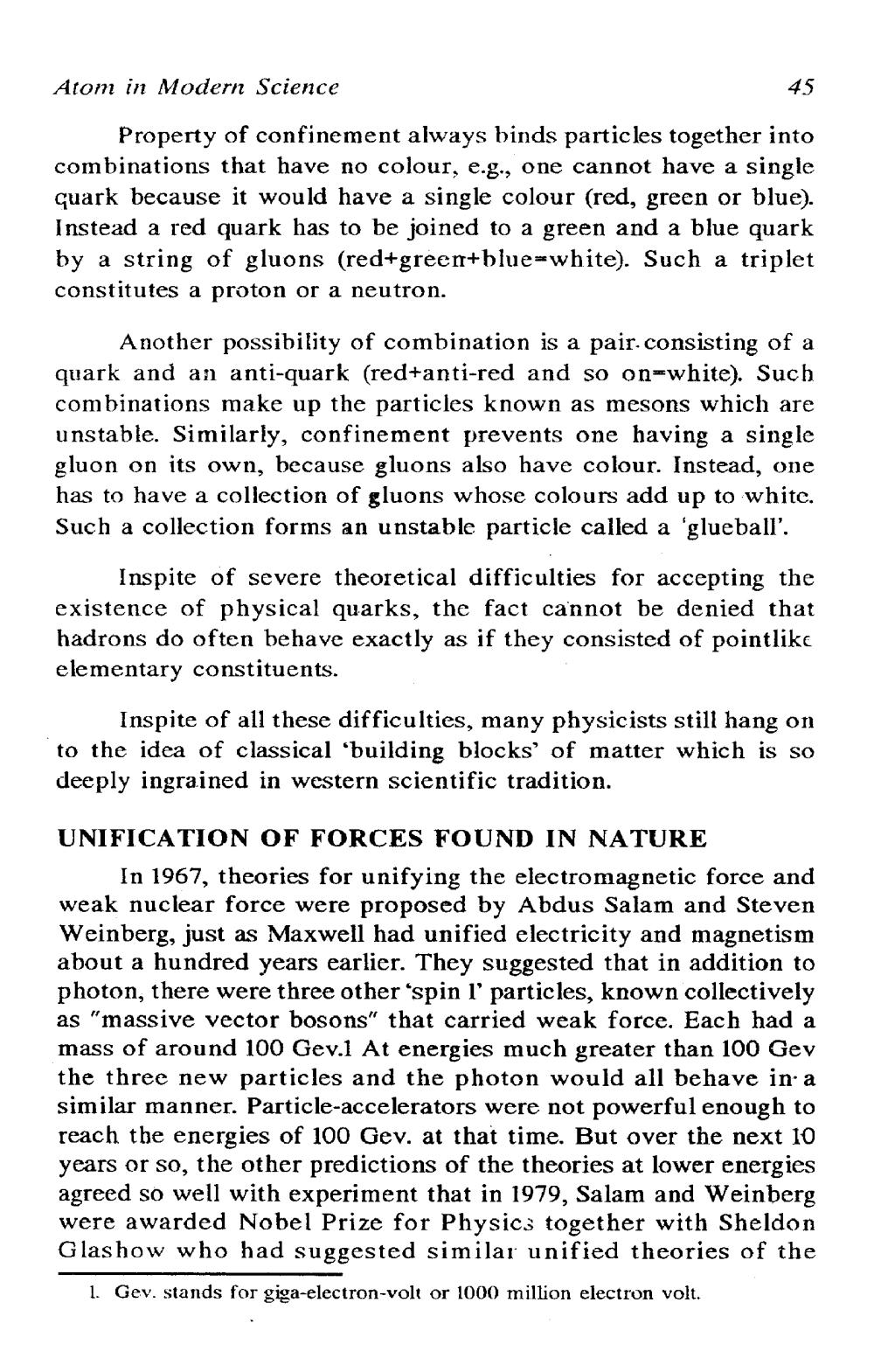________________
Atom in Modern Science
45
Property of confinement always binds particles together into combinations that have no colour, e.g., one cannot have a single quark because it would have a single colour (red, green or blue). Instead a red quark has to be joined to a green and a blue quark by a string of gluons (red+green+blue-white). Such a triplet constitutes a proton or a neutron.
Another possibility of combination is a pair.consisting of a quark and an anti-quark (red+anti-red and so on-white). Such combinations make up the particles known as mesons which are unstable. Similarly, confinement prevents one having a single gluon on its own, because gluons also have colour. Instead, one has to have a collection of gluons whose colours add up to white. Such a collection forms an unstable particle called a 'glueball'.
Inspite of severe theoretical difficulties for accepting the existence of physical quarks, the fact cannot be denied that hadrons do often behave exactly as if they consisted of pointlike elementary constituents.
Inspite of all these difficulties, many physicists still hang on to the idea of classical 'building blocks' of matter which is so deeply ingrained in western scientific tradition.
UNIFICATION OF FORCES FOUND IN NATURE
In 1967, theories for unifying the electromagnetic force and weak nuclear force were proposed by Abdus Salam and Steven Weinberg, just as Maxwell had unified electricity and magnetism about a hundred years earlier. They suggested that in addition to photon, there were three other 'spin l' particles, known collectively as "massive vector bosons" that carried weak force. Each had a mass of around 100 Gev.1 At energies much greater than 100 Gev the three new particles and the photon would all behave in a similar manner. Particle-accelerators were not powerful enough to reach the energies of 100 Gev. at that time. But over the next 10 years or so, the other predictions of the theories at lower energies agreed so well with experiment that in 1979, Salam and Weinberg were awarded Nobel Prize for Physics together with Sheldon Glashow who had suggested similar unified theories of the
1. Gev. stands for giga-electron-volt or 1000 million electron volt.




